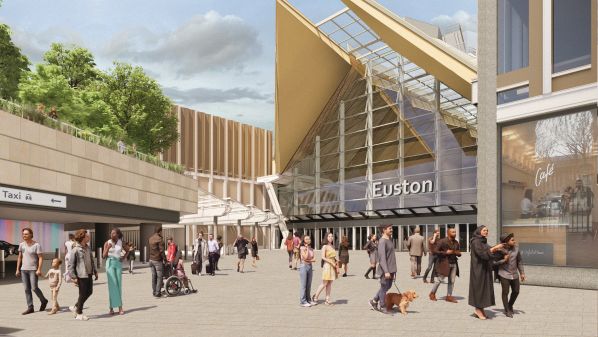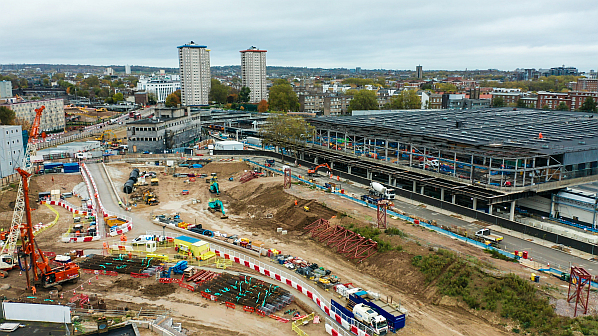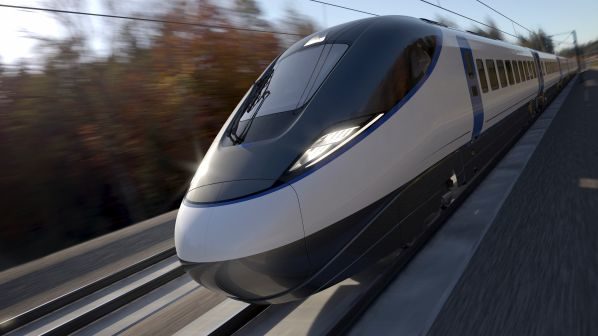THE cost of Euston Station, the southern terminus of the HS2 high-speed line between London and central Britain, has increased to £4.8bn, £2.2bn more than budgeted, a report by the National Audit Office (NAO) has found. This is despite the station being reduced from 11 platforms to 10.
The government put construction of the station, along with Phase 2a from Birmingham to Crewe, on pause for two years earlier this month to reduce costs.
The NAO, which announced the price rise for Euston Station in a report released on March 27, urged the government to use the two-year pause on new construction work at HS2 Euston to develop a design “that is affordable, deliverable and value for money.”
In January 2020 the NAO reported that the work at Euston was more complex than originally anticipated and that there was uncertainty over the HS2 station design. The following month the Oakervee Review raised concerns about the design of the HS2 Euston station and concluded that the existing design was unsatisfactory.
In April 2020 HS2 Ltd, the company building the HS2 line, set a budget of £2.6bn for the HS2 Euston station, but by June 2020 it estimated that it could cost as much as £4.4bn.
In November 2020, the Department for Transport (DfT) instructed HS2 Ltd to pause construction on the 11-platform design to begin work on a new 10-platform plan. NOA says these new plans are now £4m more expensive than the previous 11-platform design.
In Autumn 2021 the DfT also directed HS2 Ltd to integrate more closely with infrastructure manager Network Rail’s (NR) redevelopment of the existing station and confirmed the extent of the surrounding commercial and residential developments. Much of the previous design work was then scrapped, at a cost of £106m to the taxpayer, despite DfT’s efforts to minimise this, the NAO report says.
To help with this integration, and in response to the Oakervee recommendations, in December 2021 the DfT formally established the Euston Partnership to bring together the different bodies involved with projects on the Euston site, including delivery of the HS2 station.
The forecasting tool that HS2 Ltd uses as the basis of its annual cash budgeting with the government treasury predicted in 2020 that there would be a cumulative fall in prices between December 2019 and August 2022 whereas revised forecasts made in 2022 estimated an inflation rate of around 18% in that period.
NAO says that following the transport secretary’s announcement of a delay on March 9, the DfT will now need to consider how best to control the budget while developing an affordable and deliverable design.
NAO’s report says the two-year pause in new construction will see spending deferred in the short-term but will lead to additional costs and potentially an overall increase in costs in the long-term, due to the financial impact associated with stopping and re-starting work, contractual changes, and managing the project for longer.
By the end of December 2022 HS2 Ltd had spent more than £2bn on the HS2 Euston station and its approaches, including design, land, and preparatory works. The land purchases and preparatory works cost £1.5bn and were funded from the wider HS2 budget. NAO says that budget pressures on HS2 Euston station have now been compounded by significant inflationary pressures across DfT’s capital programme. In the first instance, the government’s treasury (HMT) requires the DfT to absorb inflationary pressure, which has risen significantly since the forecast in 2020, within its existing cash budget.
The NAO’s report recommends that the DfT work with the Euston Partnership, HS2 Ltd, NR Lendlease, a private property development company responsible for the development around Euston station, and local partners to reassess the expectations for the HS2 Euston project, its budget, and the public benefits.
It also suggests setting out clear aims and measures as part of the programme reset and applying the lessons it has learned to the planned Manchester HS2 stations and other parts of the programme.
“Government is once again having to revise plans for Euston HS2,” says NAO head, Mr Gareth Davies. “Clearly, the 2020 reset of the station design has not succeeded. DfT and HS2 Ltd have not been able to develop an affordable scope that is integrated with other activity at Euston, despite their focus on costs and governance since 2020. Recent high inflation has added to the challenge.
“The March 2023 announcement by the transport secretary pausing new construction work should now give DfT and HS2 Ltd the necessary time to put the HS2 Euston project on a more realistic and stable footing. However, the deferral of spending to manage inflationary pressures will lead to additional costs and potentially a more expensive project overall, and that will need to be managed closely.”
An analysis of the delay to HS2 Phase 2A will appear in the April edition of IRJ. Digital subscribers can read it in advance here.



